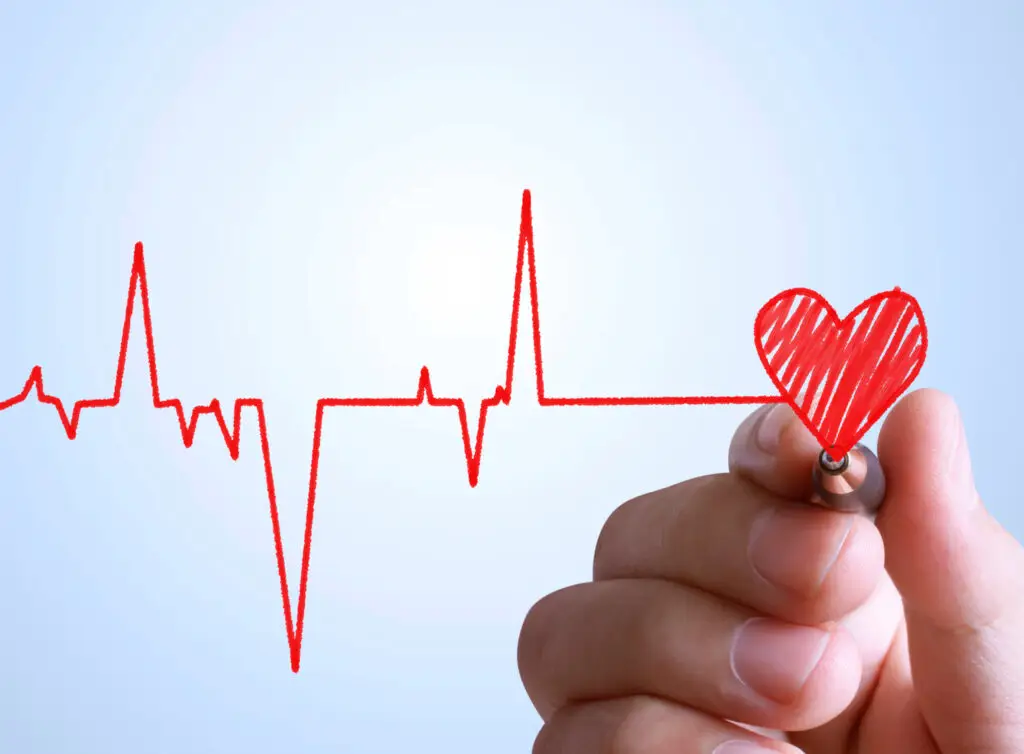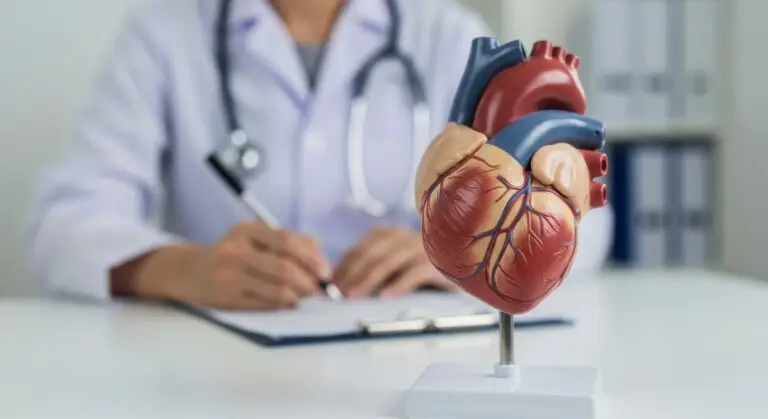
Understanding Heart Disease
Heart disease is not a single condition. It describes a range of disorders that affect the heart’s ability to function correctly. Most people think heart disease begins with a heart attack. It often develops quietly over many years.
Early signs can be easily missed. Fatigue, chest pressure, or mild shortness of breath may seem unrelated at first. Heart disease can impact more than the heart. It also affects blood vessels, circulation, brain health, and kidney function.
Stress, poor sleep, and social isolation are often overlooked contributors. These non-physical risks deserve more attention than they receive. Understanding how heart disease works helps people take action before symptoms grow serious.
Why Heart Disease Awareness Matters
Most people don’t realize they already have risk factors for heart disease. It often begins years before any symptoms appear. Awareness gives people time to act before damage becomes permanent. That alone makes it one of the most powerful tools in preventing heart-related complications.
Heart disease rarely announces itself loudly at first. It may start with silent damage to arteries or small changes in blood pressure. Without awareness, people often miss these early warnings or dismiss them as stress or a natural part of aging.
Understanding Cardiovascular Disease vs Heart Disease
Cardiovascular disease includes any condition that affects the heart or blood vessels. Heart disease is a category within it, focused only on disorders that affect the heart itself.
This difference matters during diagnosis and treatment. A person may have healthy arteries but still suffer from heart disease caused by muscle damage or rhythm issues.
Heart disease is specific. It can involve valve defects, irregular heartbeat, or weakened chambers. Cardiovascular disease is broader. It includes strokes, aneurysms, and high blood pressure problems that don’t always involve the heart directly.
Types of Heart Disease Explained
Not all heart diseases share the same cause or symptoms. Some involve blocked arteries. Others involve faulty electrical signals, inflamed tissues, or weak muscles. Many people only learn the difference after diagnosis, which can delay proper care.
Understanding the full range of heart diseases helps clarify why treatments vary. Some conditions progress slowly, while others appear suddenly. Knowing the type of heart disease someone has makes a difference in how it is managed or prevented.
Common types of heart disease include:
- Coronary Artery Disease (CAD)
- Heart Failure
- Arrhythmias
- Valvular Heart Disease
- Cardiomyopathy
- Congenital Heart Defects
- Peripheral Artery Disease (PAD)
- Aortic Aneurysm and Dissection
- Rheumatic Heart Disease
- Inflammatory Heart Disease
Each condition affects the heart differently. Some damage the heart’s ability to move blood. Others interrupt how the heart signals itself to beat. Accurate diagnosis depends on understanding which system is involved.

Heart Disease Symptoms and Warning Signs
Heart disease symptoms are not always sudden or dramatic. Many begin quietly, often mistaken for fatigue, poor sleep, or aging. People may notice shortness of breath after light activity or feel heaviness in the chest after eating. These early signs deserve more attention than they often receive.
Some symptoms happen only under stress. Others come and go without warning. For example, swelling in the ankles may increase at night and then fade by morning. Irregular heartbeats may appear during rest, not during exercise. These patterns often confuse patients and even providers.
Symptoms may also look different depending on the type of heart disease. Valve disorders often cause dizziness. Electrical issues may cause fainting. Fluid buildup in the lungs from heart failure can feel like chronic coughing. Knowing these distinctions can lead to faster, more accurate treatment.
First Symptoms of Heart Disease
The first symptoms of heart disease are often subtle. People expect a dramatic event, like chest pain or collapse. However, many experience quiet, creeping signs long before any crisis arises. These signs often involve areas such as energy levels, digestion, or sleep, which are not typically linked to heart problems.
Feeling out of breath after mild activity, waking up with a racing heart, or struggling to lie flat without coughing can be early warnings. Others may experience indigestion after meals, which can mimic heart-related chest pressure. Jaw tightness, shoulder aches, or unexplained anxiety can also signal underlying heart trouble.
Many people dismiss these signs or attribute them to aging, fatigue, or stress. But early symptoms hold valuable clues. Recognizing them increases the chances of early treatment, long before the heart suffers lasting damage.
Are Heart Disease Symptoms Constant or Sporadic?
Symptoms of heart disease can vary over time. Some appear briefly, then disappear for weeks. This leads many people to delay care, thinking the issue has passed. But when symptoms come and go, it often means the body is compensating, not healing.
An irregular heartbeat may skip for a second and feel normal minutes later. Chest pressure may appear only during stress and then disappear during rest. Swelling in the legs may increase during the day and lessen overnight. These inconsistent patterns can still point to serious problems.
People often ignore short-term symptoms if they feel better afterward. This is a mistake. Sporadic symptoms often indicate that the heart is under strain, even if it functions normally most of the time. Consistency is not required for concern. Even brief symptoms can mark the beginning of long-term disease.
How Heart Disease Develops and Why It's So Common
Heart disease rarely starts with one event. It develops over time through gradual changes in the heart and blood vessels. Arteries narrow. Blood pressure climbs. Inflammation simmers silently. These slow changes eventually reduce blood flow or disrupt the heart’s rhythm.
The early damage often goes unnoticed. People adjust to the warning signs without realizing it. They climb fewer stairs, nap more often, or breathe a bit harder. These changes feel normal, but they often signal that the heart is working harder than it should.
Heart disease is common because the risks are built into daily life. Poor sleep, processed foods, chronic stress, and a lack of movement can all contribute to the body’s strain. When combined with genetics, these invisible pressures can lead to lasting harm. By the time symptoms appear, the disease has often been active for years.
How Does Heart Disease Develop?
Heart disease develops from long-term pressure placed on the heart and blood vessels. The damage starts small. Tiny cracks form in artery walls. The body patches them with cholesterol and calcium. Over time, this patchwork narrows the vessels, limiting oxygen flow.
The heart adapts by working harder. It thickens or enlarges in response to the added strain. Electrical signals that tell the heart when to beat may become irregular. Valves that once sealed tightly may begin to leak.
These slow shifts can happen without pain. Often, the first sign of trouble is not a symptom, but rather a finding made during a routine checkup. By the time people feel something is wrong, the damage has already been done.
Heart Disease Risk Factors
Most people hear about smoking, diet, and cholesterol. But some risk factors remain hidden or misunderstood. Chronic inflammation, loneliness, disrupted sleep, and long-term caregiving stress can strain the heart in ways blood tests can’t always show.
Family history plays a larger role than many realize. If a close relative had early heart disease, the chances rise even when the lifestyle looks healthy. Risk also increases with autoimmune conditions, untreated dental infections, or long-term exposure to air pollution.
Medications for unrelated health issues can also affect the heart. Some raise blood pressure. Others interfere with potassium levels or heart rhythm. These risks rarely appear on standard checklists.
Proper prevention means looking beyond the usual suspects. The heart responds to what people carry in their bodies and lives. Knowing the full range of risk helps guide better decisions long before symptoms appear.
How Common Is Heart Disease?
Heart disease remains the leading cause of death worldwide. Yet most people underestimate how often it affects someone without classic risk factors. It can develop in people who are active, eat well, and never smoke. This gap between perception and reality keeps heart disease under-recognized.
In 2025, experts estimate that over 19 million deaths globally will result from cardiovascular conditions. Many of these will occur in people with mild or silent symptoms. High blood pressure and cholesterol often cause no pain, which makes heart disease easy to ignore until it becomes urgent.
Certain populations face higher risks due to limited access to healthcare, cultural beliefs, or inadequate screening. These unseen patterns allow the disease to spread quietly. Public awareness often lags behind the data.

Heart Disease Diagnosis Methods
Heart disease diagnosis begins before symptoms become serious. A single blood pressure reading or heart murmur may prompt further testing. The process is rarely one test. Instead, doctors piece together many small findings to gain a broader understanding.
Some diagnoses begin with unexpected clues. A swollen ankle. A racing heart during sleep. Trouble walking uphill. These subtle signs often lead to further testing, such as EKGs or blood panels. Doctors use these tools not to find one answer but to rule out many.
Diagnosis may also involve imaging techniques, such as echocardiograms or CT scans, which show how the heart moves, how valves open, and whether blood flows as it should. Some patients undergo stress tests to reveal issues that are hidden at rest.
Accurate diagnosis depends on clear communication. Patients who report small changes in energy, breathing, or sleep often provide the most valuable clues. Early, detailed conversations help detect heart disease long before emergencies happen.
Can Heart Disease Be Detected in a Blood Test?
Blood tests can reveal early signs of heart disease, often before symptoms appear. Most people think blood work only checks cholesterol. In reality, it can show signs of inflammation, heart damage, clotting risk, and more.
High levels of troponin may signal damage to the heart muscle. Elevated C-reactive protein indicates chronic inflammation, which can silently damage arteries. B-type natriuretic peptide rises in people with heart failure, even before swelling or shortness of breath appear.
Doctors also check kidney function, thyroid levels, and blood sugar. These affect heart health more than most people realize. Diabetes and thyroid disorders often go unnoticed until they trigger heart issues.
Blood work is not a diagnosis by itself. However, it gives the first warning that something inside the body is out of balance. These results inform the next steps, whether that involves imaging, medication, or lifestyle changes.
Common Diagnostic Tools
Doctors rely on more than stethoscopes and blood pressure cuffs. Diagnosing heart disease requires tools that see beyond what a person feels or reports. Each test looks at a different layer of heart function, and no single test tells the whole story.
An electrocardiogram records the heart’s rhythm and reveals silent irregularities, even in people who feel fine. An echocardiogram uses sound waves to visualize the heart’s movement and assess whether the valves open and close properly. These images often reveal conditions that don’t appear in blood work.
Stress tests measure how the heart reacts during movement, not just at rest. This can expose blocked arteries or rhythm issues triggered by exertion. In some cases, a CT scan or cardiac MRI provides a more detailed view of the structure and blood flow.
Doctors choose these tests based on symptoms, history, and risk factors. A careful combination of results creates the clearest picture. Early testing can prevent emergencies by catching heart disease while it’s still manageable.
Heart Disease Treatment Options
Treatment for heart disease does not follow a single path. Each plan depends on the type of disease, its progression, and the body’s response. Some people improve with simple changes. Others need advanced procedures. Most require a mix of tools to maintain long-term stability.
Doctors may begin with medication, but treatment doesn’t stop there. Successful care often involves physical activity, adjustments to sleep patterns, and effective stress management. Inflammation, fluid retention, and blood pressure all respond to different strategies. One person may need a pacemaker. Another might benefit more from dietary adjustments and supervised exercise.
Mental health also plays a role. People with heart disease face more anxiety, depression, and fatigue than others. If left untreated, these issues can slow physical recovery. A complete treatment plan addresses both the physical and emotional impact.
Harvard Health – Heart Disease provides further guidance on standard and emerging treatments.
Medications and Procedures
Medications do more than lower blood pressure or cholesterol. Some improve how the heart relaxes between beats. Others reduce the heart’s workload or help it pump more efficiently. These drugs often work best in combination, even if each one seems small on its own.
Procedures also vary. A stent holds open a narrowed artery. A valve replacement restores proper blood flow. A defibrillator prevents sudden death from dangerous rhythms. These tools don’t cure the condition, but they regain safety and control.
Some treatments involve timing. Doctors may delay surgery until medications improve function. Others act fast to prevent permanent damage. The right plan depends on the whole picture, not just the test results.
People often expect a single fix. In reality, heart disease management encompasses many complex components. Success often stems from steady adjustments, rather than a single primary intervention. Minor improvements in how the heart functions can lead to significant gains in energy, breath, and overall well-being.
Can Heart Disease Be Reversed or Cured?
Most people want to know if heart disease can be cured or reversed. The answer depends on the type and stage of the condition. Some damage is permanent. However, many early changes in the heart and arteries can be improved when the right changes occur at the right time.
Reversal often starts at the microscopic level. Artery walls soften. Inflammation fades—blood pressure steadies. Curing heart disease is different. A cure suggests the problem no longer exists. For most people, this is not a realistic expectation. But living without symptoms, avoiding progression, and reducing medication needs are often possible goals.
Can Heart Disease Be Reversed with Diet and Exercise?
Diet and exercise do more than prevent heart disease. In some cases, they can begin to undo the damage. Arteries regain flexibility. Blood pressure lowers. Inflammation quiets. These changes give the heart room to recover without adding new stress.
Reversal happens slowly. A few meals or workouts won’t shift the course of a chronic disease. However, consistent routines, developed over time, can help the body rewire its management of fat, sugar, and stress.
Plant-based diets show promise. So do low-sodium, high-fiber plans with healthy fats. Movement matters too, even in small doses. Regular walking improves circulation and oxygen delivery. Strength training helps protect muscle mass and supports metabolism, which in turn benefits the heart.
Is Heart Disease Curable?
Heart disease cannot be cured in most cases, but that does not mean recovery is out of reach. Many forms of heart disease can be controlled so well that people feel symptom-free and live full, active lives. Control, rather than cure, becomes the ultimate goal.
Surgical repairs, stents, and pacemakers correct structural problems. Medications manage pressure, rhythm, and fluid levels. But these tools do not remove the underlying tendency of the body to create new blockages or develop new rhythm issues.
The idea of a cure can be misleading. It suggests that people can revert to old habits without consequences. Staying well requires attention even when symptoms fade.

Lifestyle Changes in Heart Health
Lifestyle influences how the heart functions on a day-to-day basis. It influences how fast arteries age, how blood flows, and how the body handles stress. While most people focus on food and exercise, other habits, such as sleep, hydration, and daily rhythm, matter just as much.
The body does not treat lifestyle changes as temporary fixes. It reads them as new instructions. Small, steady shifts signal the heart to beat more efficiently, reduce pressure, and manage inflammation. These signals take time, but they add up in powerful ways.
Even routines that seem unrelated to the heart make a difference. Sitting for long hours, skipping meals, or rushing through the day without pause increases heart strain. Rest and recovery are as essential as movement and nutrition.
Heart health depends less on intense effort and more on sustainable patterns. What matters most is consistency. The heart listens more to what you do every day than what you do once in a while.
MedlinePlus – Heart Diseases offers additional tools for building supportive habits.
Diet for Heart Disease Prevention
The heart does not need a perfect diet. It needs a consistent one. Small changes matter more than strict rules. Reducing sodium intake just a little can lower blood pressure within days. Adding fiber can improve cholesterol levels even without other changes.
One overlooked factor is meal timing. Large, late meals raise blood sugar and keep the heart working into the night. Regular eating times allow the body to rest, digest, and reset. Skipping meals may seem harmless, but it can cause spikes in pressure and hunger-related stress.
Food should not create fear. It should create rhythm. A heart-friendly diet feels calm, not restricted. It teaches the body to trust that the next meal will support—not strain—it.
Exercise Recommendations for Heart Disease
The heart responds best to movement that builds rhythm, not exhaustion. Walking, swimming, and slow cycling all train the heart to work without panic. Sudden, intense workouts may do more harm than good, especially when the body already shows signs of strain.
Many people think that exercise must be sweaty or painful to be effective. That mindset overlooks how the nervous system and heart communicate. Gentle, repeated motion helps calm stress hormones and lowers the resting heart rate. It also improves circulation without pushing blood pressure too high.
Balance matters. Excessive rest can weaken the heart muscle. Too much effort taxes it. The best plan starts with five to ten minutes of movement, repeated several times a day. Movement between tasks, after meals, or during TV breaks adds up faster than one long workout.
Practical Heart Health Tips
Most people know the basics, eat well, move more, stress less. Deep breathing before meals can improve digestion and lower blood pressure. A consistent sleep schedule can help lower inflammation without requiring changes to your diet or activity level.
Hydration is often overlooked, yet it supports healthy blood flow and helps the heart function more efficiently. Even mild dehydration thickens the blood and raises the heart’s workload. Drinking water gradually throughout the day helps avoid strain.
Social connection protects the heart. Isolation raises the risk of high blood pressure and cardiac events. Sharing a meal, walking with someone, or even making regular phone calls can create calm that the heart can feel.
Paying attention to rhythm—daily routines, eating patterns, and rest cycles—grounds the nervous system. A steady rhythm outside the body helps support the one inside it. The heart does not only respond to medicine. It responds to how we live each hour.
Heart Disease Myths vs Facts
Many people believe heart disease always comes with chest pain. In truth, some of the most dangerous cases start with no pain at all. Others think women are less at risk, yet heart disease remains the leading cause of death for both men and women.
Another myth is that heart disease only affects people who eat poorly or avoid exercise. Genetics, chronic stress, and certain medications can increase risk even in people with healthy lifestyles. Some also believe that a clean angiogram rules out heart problems, but microvascular disease can block small vessels that scans may miss.
It’s also common to hear that once symptoms improve, the disease is gone. In reality, symptoms often come and go, depending on factors such as rest, diet, weather, or mood. Improvement is a good sign, but not proof that the heart has healed.
Curious for more insights? See our blogs here.

